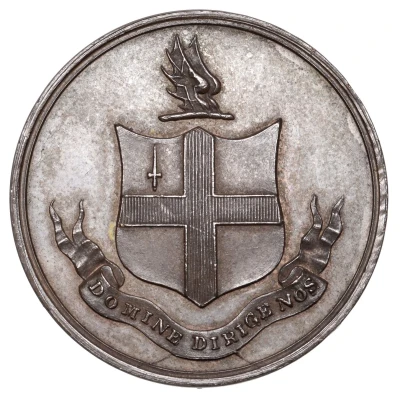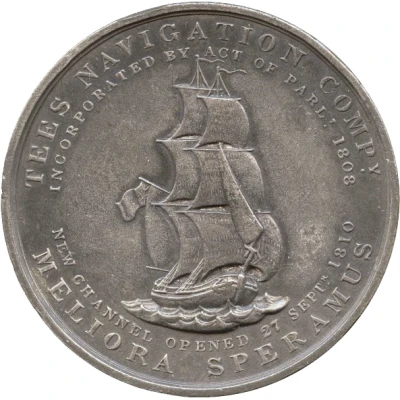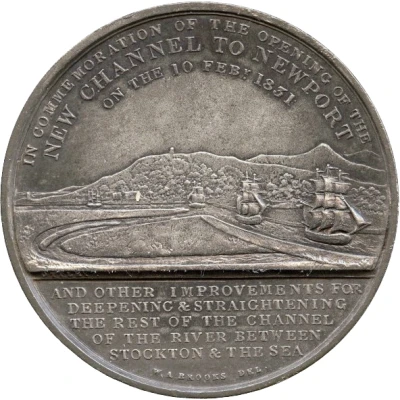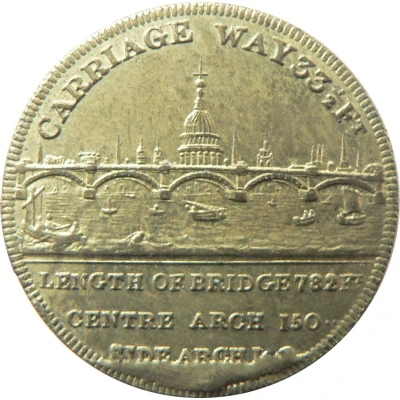
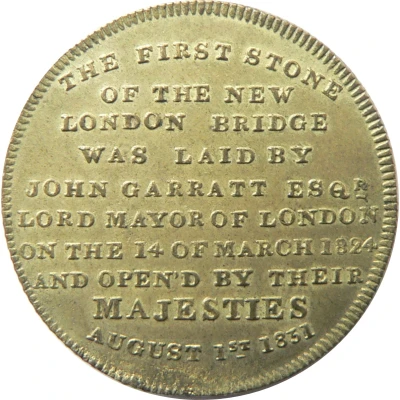

© ZacUK
Medallion - London Bridge
1831 year| Gilding metal plated brass | - | 28 mm |
| Location | United Kingdom (United Kingdom, British Overseas Territories and Crown Dependencies) |
|---|---|
| King | William IV (1830-1837) |
| Type | Medals › Commemorative medals |
| Year | 1831 |
| Composition | Gilding metal plated brass |
| Diameter | 28 mm |
| Thickness | 1.5 mm |
| Shape | Round |
| Technique | Milled |
| Orientation | Medal alignment ↑↑ |
| Demonetized | Yes |
| Updated | 2024-11-14 |
| Numista | N#109968 |
|---|---|
| Rarity index | 93% |
Reverse
Central inscription in ten lines, the top and bottom lines curved.
Script: Latin
Lettering: THE FIRST STONE OF THE NEW LONDON BRIDGE WAS LAID BY JOHN GARRATT ESQR. LORD MAYOR OF LONDON ON THE 14 OF MARCH 1824 AND OPEN'D BY THEIR MAJESTIES AUGUST 1ST. 1831
Edge
Milled
Comment
This 28mm base metal token commemorates the opening of the bridge. It wrongly states that the first stone of the bridge was laid March 14, 1824 instead of June 15, 1825 which is the generally accepted date.Work on the new London Bridge, to replace the existing bridge that was over 600 years old, began in 1825. The new bridge was designed by John Rennie, completed in 1831 and formally opened by King William IV on 1 August 1831.
Background: A small 19th Century medalet to commemorate the opening of New London Bridge in 1831. Later in 1967 the Common Council of the City of London placed the bridge on the market and began to look for potential buyers. On 18 April 1968, the bridge was sold to an American. It was purchased by the Missourian entrepreneur Robert P. McCulloch of McCulloch Oil for US$2,460,000. As the bridge was taken apart, each piece was meticulously numbered. The blocks were then shipped overseas through the Panama Canal to California and trucked from Long Beach to Arizona. The bridge was reconstructed by Sundt Construction at Lake Havasu City, Arizona and re-dedicated on 10 October 1971.
The obverse on most tokens has a large die break at the bottom ...
